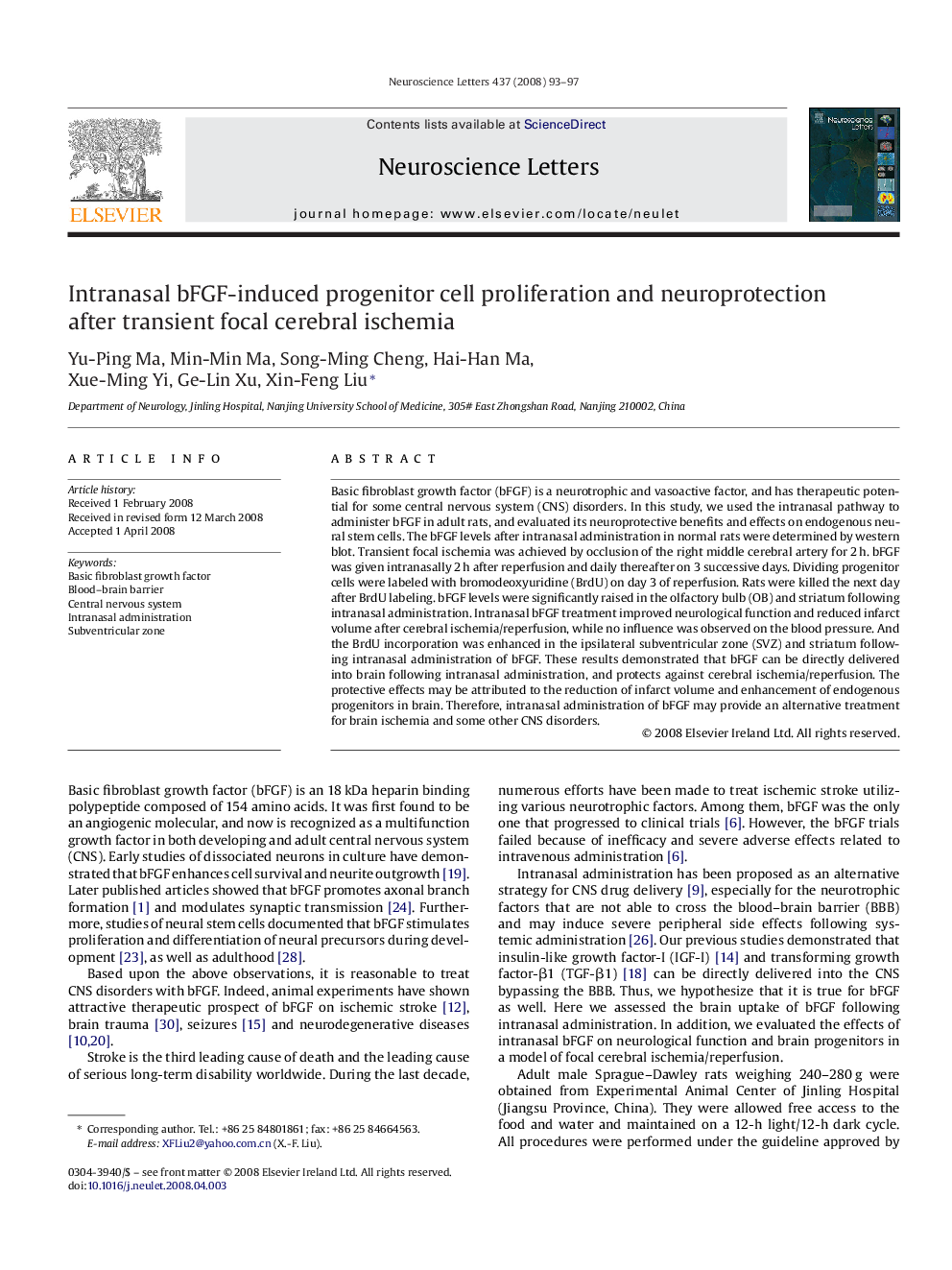| Article ID | Journal | Published Year | Pages | File Type |
|---|---|---|---|---|
| 4348206 | Neuroscience Letters | 2008 | 5 Pages |
Abstract
Basic fibroblast growth factor (bFGF) is a neurotrophic and vasoactive factor, and has therapeutic potential for some central nervous system (CNS) disorders. In this study, we used the intranasal pathway to administer bFGF in adult rats, and evaluated its neuroprotective benefits and effects on endogenous neural stem cells. The bFGF levels after intranasal administration in normal rats were determined by western blot. Transient focal ischemia was achieved by occlusion of the right middle cerebral artery for 2Â h. bFGF was given intranasally 2Â h after reperfusion and daily thereafter on 3 successive days. Dividing progenitor cells were labeled with bromodeoxyuridine (BrdU) on day 3 of reperfusion. Rats were killed the next day after BrdU labeling. bFGF levels were significantly raised in the olfactory bulb (OB) and striatum following intranasal administration. Intranasal bFGF treatment improved neurological function and reduced infarct volume after cerebral ischemia/reperfusion, while no influence was observed on the blood pressure. And the BrdU incorporation was enhanced in the ipsilateral subventricular zone (SVZ) and striatum following intranasal administration of bFGF. These results demonstrated that bFGF can be directly delivered into brain following intranasal administration, and protects against cerebral ischemia/reperfusion. The protective effects may be attributed to the reduction of infarct volume and enhancement of endogenous progenitors in brain. Therefore, intranasal administration of bFGF may provide an alternative treatment for brain ischemia and some other CNS disorders.
Keywords
Related Topics
Life Sciences
Neuroscience
Neuroscience (General)
Authors
Yu-Ping Ma, Min-Min Ma, Song-Ming Cheng, Hai-Han Ma, Xue-Ming Yi, Ge-Lin Xu, Xin-Feng Liu,
